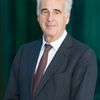I'm writing this at the tail end of what has been a hectic but extraordinarily energising week on the path to AIDS2014 - I know it's only October 2013 but it is certainly apparent already to me and my colleagues both here in Australia and at the IAS Secretariat in Switzerland that there is already a groundswell of momentum building ahead of the event.
To begin with, it was quite a week in Sydney where over 70 members of the Conference Coordinating Committee (CCC) and program committees had flown in from around the world to work on the conference program for AIDS2014. At the same time the backdrop of the Sydney's earlier stunning weather transformed into an eerie windy haze as bush fires flared up on the edges of the city. It was sobering for all of us as to hear that Australia might be facing its worst bushfire season yet.
There was great energy at the CCC and program meetings. The plenaries are almost finalised and I am delighted to say that we will have some great home grown surprises for the opening and closing ceremonies.
Putting together a program for an event of the size of AIDS 2014 is as big a job as it is intense so we were all looking forward to the reception organised by the NSW Minister of Health Jillian Skinner at Parliament House last Thursday evening.
Many stakeholders from NSW and beyond were there for the event - people living with HIV, researchers, clinicians, business leaders, donors, NGOs and political representatives - many of whom had devoted huge chunks of their lives towards fighting HIV/AIDS. In my speech, I emphasised that the conference theme of Stepping Up The Pace acknowledged that the extraordinary scientific advances of the past few years needed to be maintained but that at the same time we needed to be taking with us those key affected populations currently being left behind in the epidemic. It's a theme we'll hear a lot more of in the lead into Melbourne.
Later that evening I attended a dinner hosted by the Kirby Institute in honour of Françoise Barré-Sinoussi, the IAS president and my AIDS 2014 International Co Chair. It was wonderful to see two of the great global champions of the HIV response - Françoise and former Justice of the Australian High Court Michael Kirby, sitting side by side during the evening - their presence together encapsulated the very sense of the key two pillars in the fight against the epidemic - scientific activism and human rights activism.
It has been even warmer this week in Darwin where I've been attending the annual Australasian HIV/AIDS Conference and I felt somewhat envious of the young men floating around in blue transparent rings in the wave pool in front of the convention centre!
There have been some fascinating presentations this week.
David Wilson from the Kirby Institute delivered a superb talk on ending AIDS in Asia Pacific. Using mathematical modelling to see what would be needed to reach the UN targets by 2022, he said that China would need to double its funding for HIV and Indonesia would need to increase funding 10 fold to achieve those targets. Some countries such as Myanmar and Nepal are already on track with current funding.
Wilson also said it will take more than money. Political will is key and with HIV AIDS now representing only 3-5% of the global burden of disease in the Asia Pacific region, this will be difficult. But investing now will pay off later in reducing new infections. In Indonesia, investing US$1.00 now will yield US$4.00 in return for preventing new infections and AIDS.
Brigitte Autran´s plenary speech on elite controllers and post-treatment controllers was also fascinating - her explanation of the immunology driving the differences between these two unique groups could lead to new clues for an HIV cure.
And in a week where Australia's response to the epidemic was given a huge reality check with the release of annual data indicating the biggest increase in new infections in over 20 years, it was indeed good news to hear from James Ward - an indigenous academic sexual health physician working in the Territory - that we are doing something right here in the HIV response in indigenous communities.
Amazingly, HIV is probably one of the only health conditions at similar levels in Indigenous and non-Indigenous Australians, whilst Indigenous Australians continue to endure epidemic rates of TB, gonorrhoea, syphilis and non-communicable diseases. In contrast to our experience in Australia, First Peoples in other countries such as Canada are disproportionately affected by HIV. So we need to be vigilant and maintain the outstanding prevention programs we have put in place here in Australia.
No doubt we'll hear a lot more on these issues at AIDS 2014in Melbourne next year.
